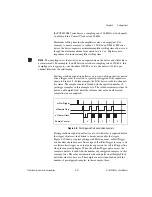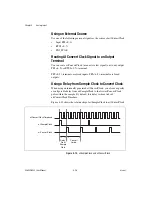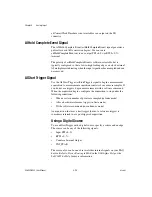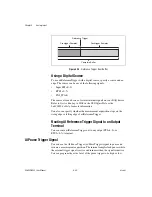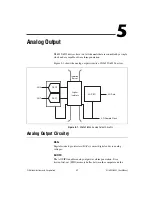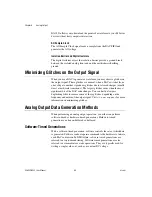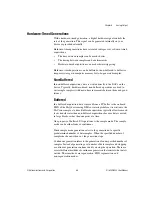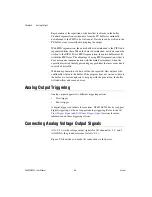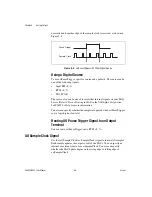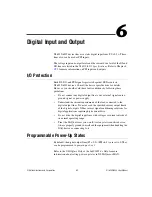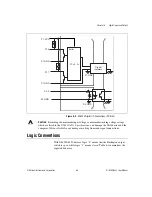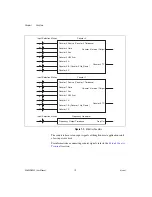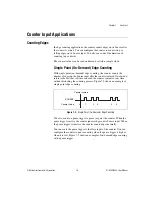
Chapter 5
Analog Output
5-4
ni.com
Regeneration is the repetition of the data that is already in the buffer.
Standard regeneration is when data from the PC buffer is continually
downloaded to the FIFO to be written out. New data can be written to the
PC buffer at any time without disrupting the output.
With FIFO regeneration, the entire buffer is downloaded to the FIFO and
regenerated from there. When the data is downloaded, new data cannot be
written to the FIFO. To use FIFO regeneration, the entire buffer must fit
within the FIFO size. The advantage of using FIFO regeneration is that it
does not require communication with the main host memory when the
operation is started, thereby preventing any problems that may occur due to
excessive bus traffic.
With non-regeneration, old data will not be repeated. New data must be
continually written to the buffer. If the program does not write new data to
the buffer at a fast enough rate to keep up with the generation, the buffer
will underflow and cause an error.
Analog Output Triggering
Analog output supports two different triggering actions:
•
Start trigger
•
Pause trigger
A digital trigger can initiate these actions. NI 6232/6233 devices support
digital triggering, but do not support analog triggering. Refer to the
sections for more
information on these triggering actions.
Connecting Analog Voltage Output Signals
AO <0..3> are the voltage output signals for AO channels 0, 1, 2, and 3.
AO GND is the ground reference for AO <0..3>.
Figure 5-2 shows how to make AO connections to the device.

